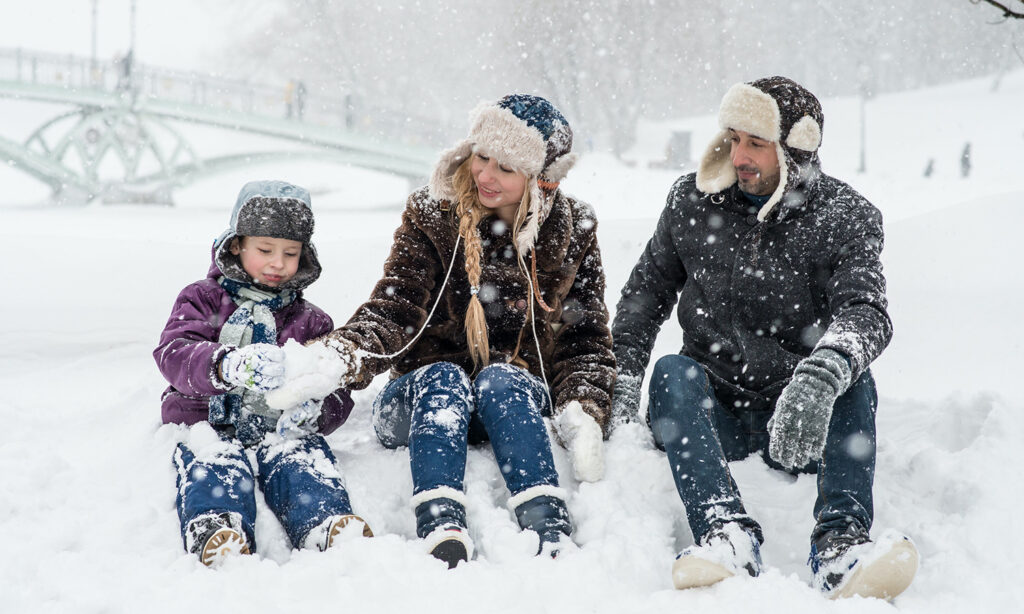
Cold weather comes with winters in Pennsylvania and with the freezing temperatures, windchill, ice and snow also come an added risk for potential exposure injuries.
While some love the winter wonderland, others may want to hunker down in their homes and wait it out until spring. Consider the following tips to help keep safe and warm when the temperatures plummet.
Listen to Your Body
When the temperatures drop, it’s important that you listen to your body when exposed to the cold. Our bodies are designed to regulate our temperature and when it gets too hot or too cold, the brain sends signals to the body to get it back to a healthy temperature.
The most common signals from our brains are shivering, goose bumps, the urge to curl up or hug our body, and change or loss of color of the skin (pale, red or blue). If you’re body is trying to tell you something, don’t ignore it.
Cooling of body parts may result in various cold injuries – with hypothermia being the most serious. Nonfreezing cold injuries include chilblains (skin sores) and immersion foot or trenchfoot. Freezing injuries include frostnip, frostbite, and hypothermia.
Toes, fingers, ears, and nose are at greatest risk because these areas do not have major muscles to produce heat. In addition, the body preserves heat to keep our core and internal organs warm by reducing the flow of blood to the extremities under cold conditions. In addition, hands and feet tend to get cold more quickly than the body (torso) because they lose heat more rapidly since they have a higher surface area-to-volume ratio, and they are more likely to be in contact with colder surfaces and moisture than other parts of the body.
Dress in Layers
Dress in layers and cover your head. When heading outdoors in the cold, it is important to be prepared for changing conditions. Being out in the elements unexpectedly, or underdressed and underprepared can put you at a greater risk for developing hypothermia or other freezing injuries. It’s important to consider that even when under cover or inside a car, hypothermia can still develop.
When outside in the elements, hypothermia and frostbite can be avoided by wearing loose fitting, light-weight layers of clothing, a hat, gloves, insulated socks and water-repellant shoes. Layering makes adapting to changing conditions and activity levels easier.
Proper layering allows you to remove or add insulation so that you never get too cold or too hot preventing excessive sweating, which can cause additional heat loss, especially when you slow down, expose your skin, or stop to rest. Base layers should be light-weight, form fitting, and composed of materials that will wick moisture from the skin (polyester, merino wool, silk). External layers should have insulating properties (down, wool, and fleece) and provide protection from the elements (waterproofing, wind-breaking).
Mind the Temperature and Wind Chill
Wind chill is how cold it feels on your skin when the wind is factored into the temperature and forecast. Meteorologists refer to this as the “feels-like” temperature. A surface loses heat three ways: conduction, convection, and radiation. Wind chill affects the body through convection, or the movement of air around the body.
The wind strips away the thin layer of warm air above your skin. The stronger the wind, the more heat lost from your body, and the colder it will feel. When the winds are light, it will feel closer to the actual air temperature.
The “feels-like” conditions are what you should prepare for when heading outdoors, taking weather alerts (frost advisories, wind chill advisories) and their warnings seriously as frostbite and hypothermia can rapidly occur in some conditions.
Have an Emergency Kit
It is also important to make sure you have an emergency kit prepared and ready in your vehicle or carry extra kit items with you in a backpack if possible. The Pennsylvania Department of Transportation recommends that the vehicle kit contain the following items: a flashlight and batteries, a battery-operated radio, jumper cables, an extra cellphone and charger, a snow shovel, matches and candles, first aid supplies, extra warm clothing and gloves, a blanket, ice scraper, bottled water, non-perishable food, and anything else you may need to accommodate family traveling with you (special medication, baby supplies, and pet food).
If you are not using a car or vehicle when outdoors, consider taking along first aid supplies, extra warm clothing and gloves, a small blanket, bottled water, non-perishable food, and additional special medication and baby supplies just in case you become stranded.
This time of year has its challenges, but it also can be very enjoyable. Preparation is essential to ensuring you can safely make the most of the winter season. Taking a little extra time to plan ahead can save you a trip to the emergency room.
Annalisa Negrea, RN, is the injury prevention coordinator with Trauma Services at UPMC Williamsport, 700 High Street. For more information, visit UPMC.com.




